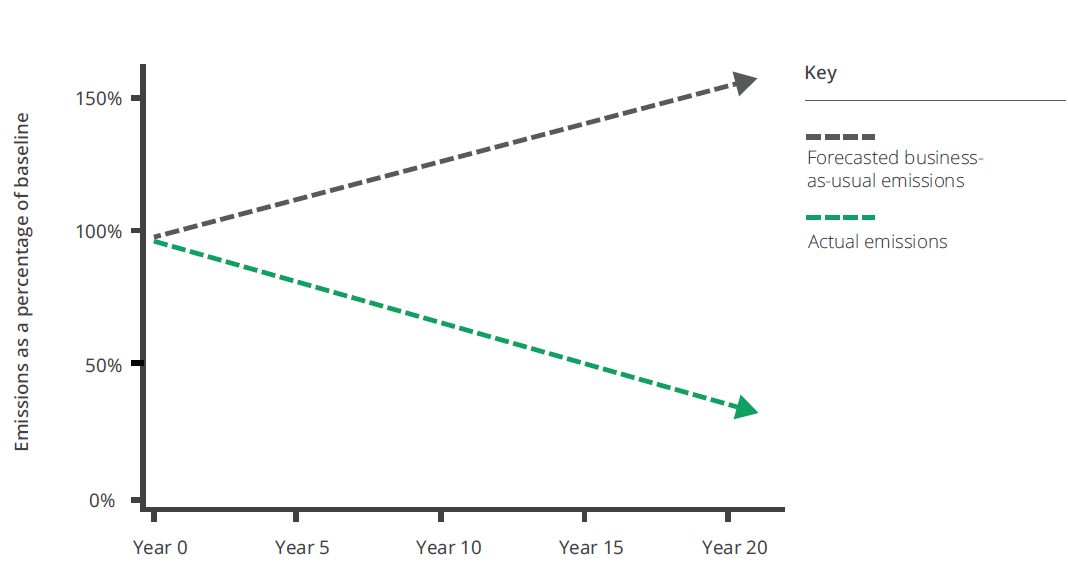The third step is to set a credible science-aligned target to reduce the measured emissions of the subject and broader organization through the internal abatement of GHG emissions. The aim is to undertake these reductions in a way that ensures business value from clear, ambitious, and immediate action.
Overview of requirements
The organization must set a short-term science-aligned internal abatement target to ensure the subject’s emissions decrease over time. The target may be expressed as an absolute GHG emission reduction or as a decrease in GHG intensity, with absolute GHG reduction targets preferred. An example of an absolute GHG reduction target is demonstrated in Figure 2. The organization is encouraged to set a long term abatement target and net zero commitment.
For more about approaches to setting abatement targets see Guidance 3.3.
Figure 2: Emissions Profile for Subject of CarbonNeutral® Certification
